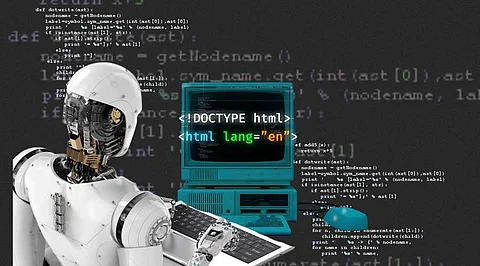

AI has many applications in various domains, such as healthcare, education, business, entertainment, and security. However, developing and deploying AI systems can be challenging, especially for non-technical people or enterprises that lack the resources and expertise to do so.
This is where low-code and no-code AI platforms come in handy. These tools allow anyone to create AI applications without having to write complex code or have a deep understanding of the underlying algorithms and models. Low-code and no-code AI platforms aim to make AI more accessible and democratized, enabling a wider range of users to leverage the power and potential of AI for their specific needs and goals.
Low-code and no-code AI platforms typically offer an intuitive and user-friendly interface where users can drag and drop elements, select menu options, or answer questions to build their AI applications. Some platforms also provide pre-built templates, models, and data sets that users can customize and modify according to their requirements. Low-code and no-code AI platforms can help users with various tasks, such as data collection, preparation, analysis, visualization, modeling, testing, deployment, and monitoring. Some examples of low-code and no-code AI platforms are:
This cloud-based service provides a comprehensive set of tools for building, training, tuning, deploying, and managing machine learning models. Users can choose from various frameworks and algorithms or use their custom code. Amazon SageMaker also offers features such as data labeling, model explainability, bias detection, debugging, automation, and integration with other AWS services.
This is a suite of products that enables users to create custom machine learning models with minimal coding or expertise. Users can upload their data and use Google's state-of-the-art neural architecture search technology to generate and optimize the best model for their data automatically. Google Cloud AutoML supports various domains, such as vision, natural language, video, tables, and edge.
This platform empowers users to create business solutions using low-code or no-code tools. Users can build apps, workflows, chatbots, dashboards, reports, and more using Microsoft Power Apps, Power Automate, Power Virtual Agents, Power BI, and Power Fx. Microsoft Power Platform also integrates with Azure AI services and other Microsoft products.
This platform enables users to build and deploy AI solutions using various tools and frameworks. Users can access IBM Watson services for natural language processing, computer vision, speech recognition, and more. IBM Watson Studio also supports data science tools such as Jupyter Notebooks, RStudio, Spark, and TensorFlow.
This is a platform that focuses on computer vision and image annotation. Users can upload their images and use various tools to label them with bounding boxes, polygons, points, lines, and more. SuperAnnotate also provides quality assurance, collaboration, model training, and deployment features.
Low-code and no-code AI platforms have many advantages for users who want to create AI applications without spending too much time or money on coding or hiring experts. Some of these advantages are:
Low-code and no-code AI platforms can speed up development by automating or simplifying many steps in building AI applications. Users can save time on coding, debugging, testing, and deploying their applications.
Low-code and no-code AI platforms can lower the barriers to entry for using AI by making it more accessible and understandable for non-technical users. Users can learn how to use these platforms with minimal training or guidance and leverage the power of AI for their purposes.
Low-code and no-code AI platforms can foster greater innovation by enabling more people to experiment with AI and create new solutions for various problems or opportunities. Users can explore possibilities, test hypotheses, and iterate quickly on their ideas.
However, low-code and no-code AI platforms also have limitations and challenges that users should know. Some of these are:
Low-code and no-code AI platforms may not offer the same customization and flexibility as coding. Users may be unable to fine-tune their models, modify their algorithms, or integrate their applications with other systems as easily as they would with code.
Low-code and no-code AI platforms may not provide enough transparency or explainability for how their models work or why they produce certain results. Users may not be able to understand the logic behind their models, the assumptions they make, or the potential biases they have.
Low-code and no-code AI platforms may create a dependency on the vendors that provide them. Users may have to rely on the vendors for updates, support, security, and compliance. Users may also face issues with data ownership, privacy, and portability.
In conclusion, low-code and no-code AI platforms are powerful tools that help anyone create AI applications without coding. They can offer many benefits, such as faster development, easier adoption, and greater innovation. However, they also have some drawbacks, such as limited customization, lack of transparency, and vendor dependency. Users should weigh the pros and cons of these platforms and choose the ones that best suit their needs and goals.
Join our WhatsApp Channel to get the latest news, exclusives and videos on WhatsApp
_____________
Disclaimer: Analytics Insight does not provide financial advice or guidance. Also note that the cryptocurrencies mentioned/listed on the website could potentially be scams, i.e. designed to induce you to invest financial resources that may be lost forever and not be recoverable once investments are made. You are responsible for conducting your own research (DYOR) before making any investments. Read more here.
